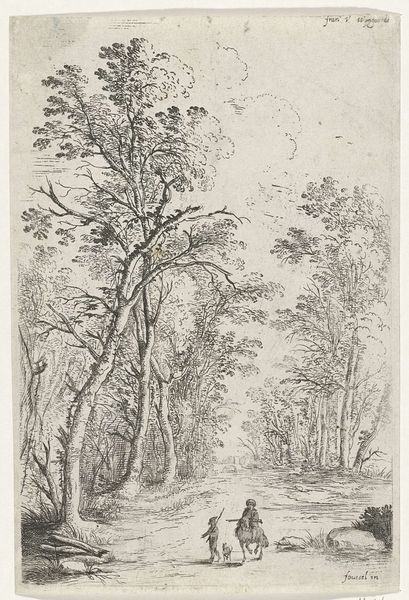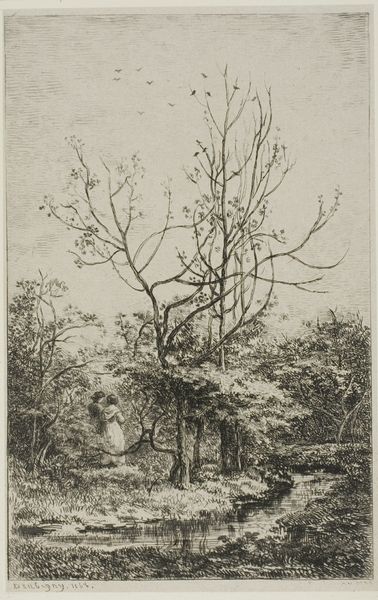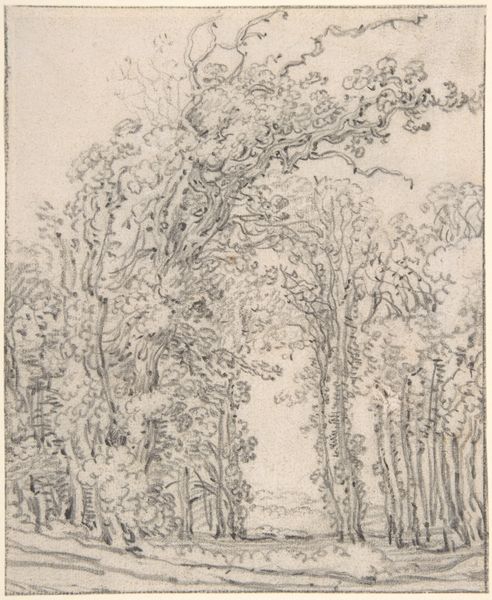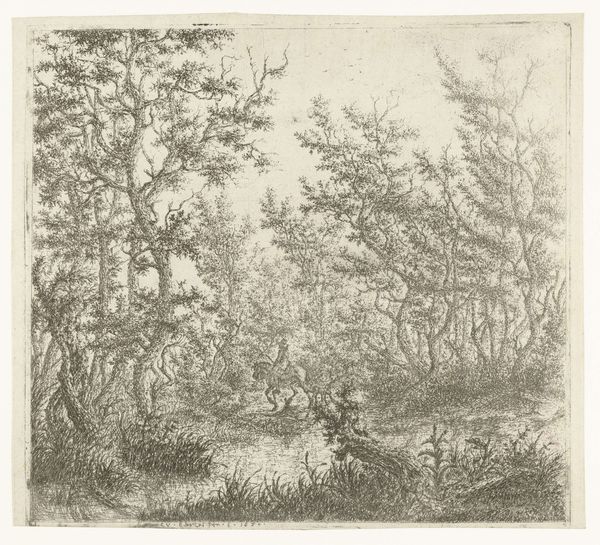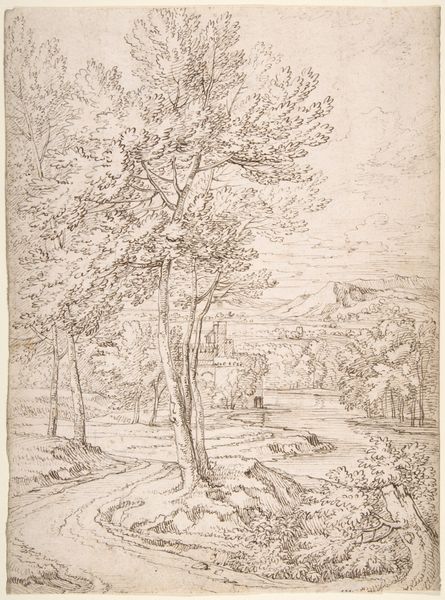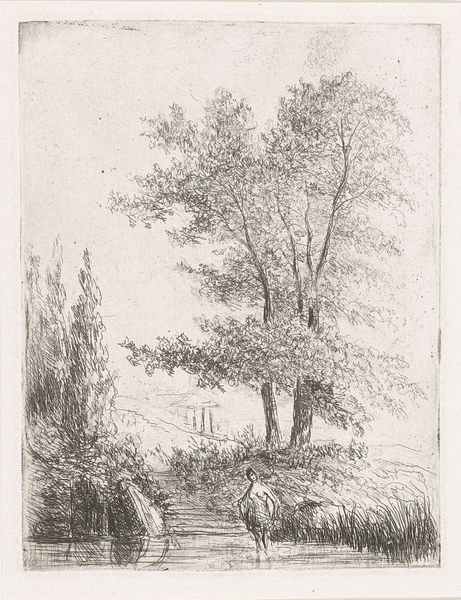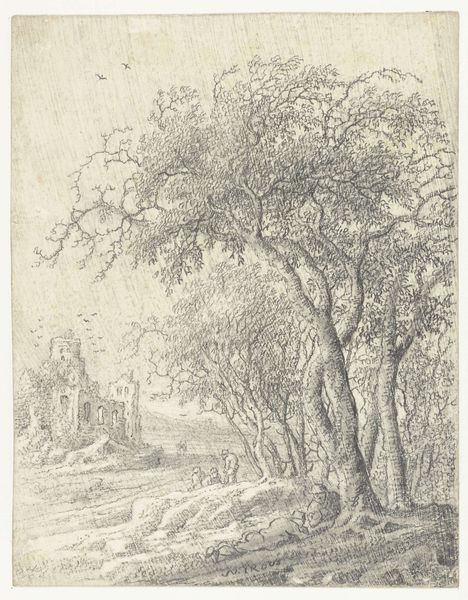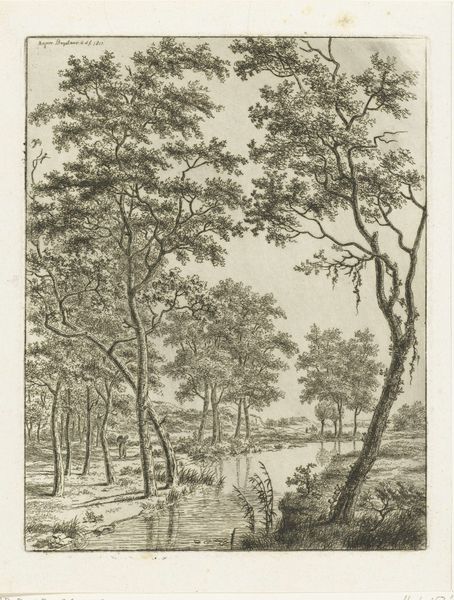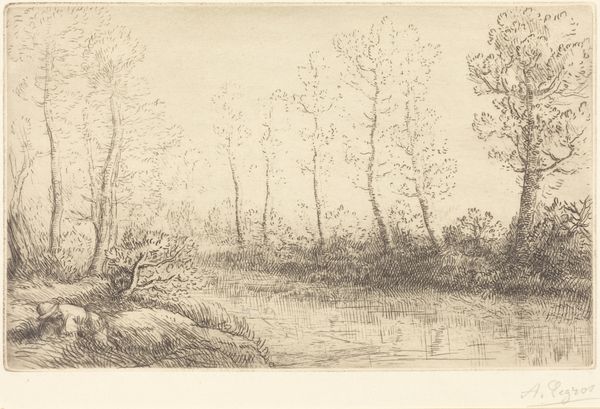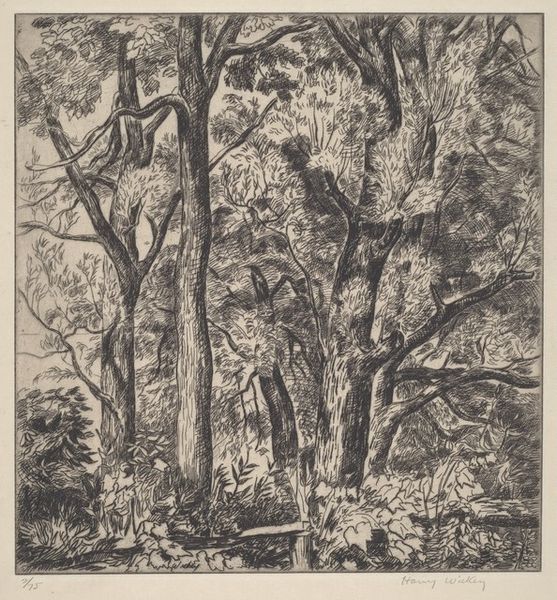
drawing, pen
#
drawing
#
pen drawing
#
pencil sketch
#
landscape
#
pen
#
cityscape
#
early-renaissance
Dimensions: height 275 mm, width 195 mm
Copyright: Rijks Museum: Open Domain
Editor: So, this is Gerard ter Borch the Elder's "Garden of the Villa Madama, Outside Rome," created in 1609 using pen and pencil. It’s striking how detailed it is despite being a relatively simple sketch. What stands out to you when you look at it? Curator: I'm drawn to the means of its creation. Think about the paper itself, the ink used, even the specific type of quill or pencil employed. Where did these materials originate? What processes transformed raw materials into the tools for making art? This drawing wasn't made in a vacuum. Editor: That's fascinating, I hadn’t considered that! How does knowing about the materials shift our understanding of the drawing? Curator: It reveals connections between artistic production and the broader social context. The availability and cost of materials would influence artistic choices. Ter Borch’s access to quality paper and drawing implements speaks to a certain economic position and networks. Consider the labor involved in their creation, too – papermakers, quill cutters, the global trade routes that brought these items to Rome. Editor: So, it's not just about the final image, but the whole network of production behind it. The level of detail becomes even more impressive considering that. Does the setting—the Villa Madama—play into this materialist interpretation? Curator: Absolutely! A villa represents a concentration of wealth and power. Ter Borch depicting this space with these specific materials tells us about the relationship between artistic creation, patronage, and the display of social status through art and architecture. Think about who owned the villa and the laborers who maintained it versus those consuming this landscape view. Editor: I’m starting to see art as embedded within economic and social realities. Curator: Precisely! This drawing is not simply a landscape, but an index of social relationships. Editor: It's much richer when viewed this way! Thanks. Curator: Agreed! Thinking about art’s means of production always unlocks new levels of meaning.
Comments
No comments
Be the first to comment and join the conversation on the ultimate creative platform.
